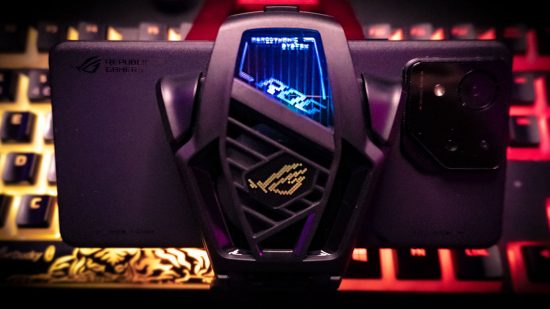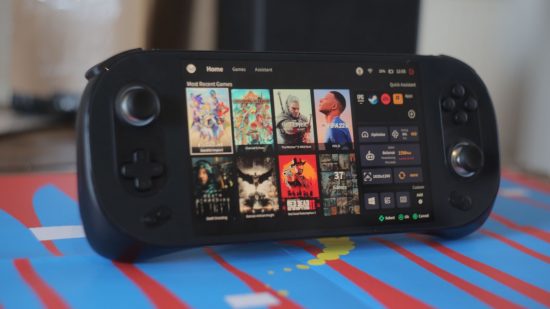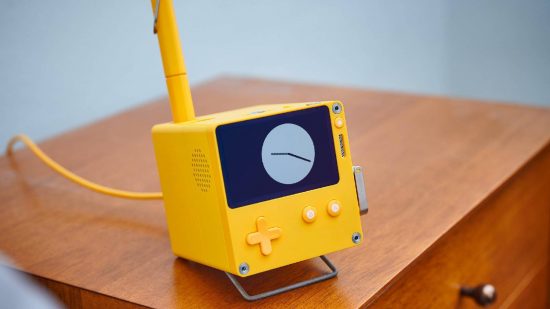Reviewing products is quite a complicated thing – especially in the fast-paced and spec-driven world of technology and mobile gaming. One product may cater perfectly to a small few, or cater well enough to a wider group. We have a strict process for all our reviews here at Pocket Tactics, and we want to share it with you so that you can trust and understand our buying advice.
We’ve developed our review process through years of experience. Our team of writers and regular reviewers test the best gaming phones, portable gaming consoles (like Nintendo Switch consoles), tablets, headphones, controllers, and other accessories.
How Pocket Tactics tests phones
We have a simple way of reviewing phones at Pocket Tactics – we use them extensively in real life and test them with tonnes of the best mobile games to find out how they perform. As we’re a mobile gaming site, we’re interested in gameplay first, but we’ll also look at a phone’s general features and performance, too. In terms of the games we use, we always want to push the phone to its limits, so we often test using demanding games like Honkai Star Rail, Genshin Impact, Diablo Immortal, PUBG Mobile, and others.
There are several key elements we cover in a phone review, and these are performance, display, battery life, specs, software, features, design, and cameras. That’s also in a sort of descending order for the most part; we care about performance first and foremost, while cameras matter less to hardcore mobile game players.
However, sometimes different types of phones require different types of testing. For example, the devices listed in our guide to the best rugged phones aren’t the best performers, but that’s to be expected, as these products emphasize durability over performance power. Simply put, we concentrate on a phone’s selling points and judge whether they’re worthy of the price tag.
Depending on how much time we spend with a phone, we make it our daily driver, try out all its features, and how it fits into our lives. We give honest feedback on that, and we’ll never recommend a phone if it has very clear flaws.
While some brands include Geekbench scores to explain processing and CPU power in reviews, we often opt not to. Unless you’re well versed in smartphone technology, these scores don’t offer much insight into how a phone might function and feel, so instead, we concentrate on our own experiences with the device and test it by running demanding games, streaming content, and other testing methods.
We often work with manufacturers to get mobile phones in for review. This is on a loan basis and all phones are returned after or kept for future comparisons only. If we ever have less time than is ideal, we make this clear in the headline – for example, our Xiaomi 13 Pro review.
How Pocket Tactics tests handheld consoles
When reviewing the best portable gaming consoles, like the Nintendo Switch or Steam Deck, we focus on five key things again: performance, display, build quality, battery life, and games library. The latter is often a key aspect – if there aren’t any good games to play on a device, it becomes hard to recommend it.
We also look at another aspect, given the rise of handheld PCs: user experience. The Steam Deck and Nintendo Switch both have a pretty seamless UX compared to the smaller companies elsewhere jumping into the market.
With those things in mind, we test as many different games as we can for long play sessions. As we’re handheld-focused, we also take games on the go to see how they fare out and about with hindrances such as glare and worse internet to deal with.
Benchmarks are even less useful when it comes to gaming handhelds – the Geekbench score of a Nintendo Switch is pretty meaningless – so we tend to ignore them. With the number of bespoke chipsets coming out, handhelds can be cleverly optimized for the library they use.
We also collaborate with manufacturers to get consoles for review, though this is on a loan basis and all consoles are returned after or kept for future comparison articles. We are never paid for reviews, and will never artificially inflate the score of a product. Our opinion is always independent.
How Pocket Tactics tests accessories
Reviewing tech accessories is a little different from gaming phones or portable consoles – you can’t really benchmark a Nintendo Switch headset, for example. So, accessory reviews can often be a little more subjective. Luckily, there are still clear facts to go on.
We combine these key facts – specs, prices, build quality, and ease of use – with a more personal angle of using the product in real life. In our EPOS H3PRO Hybrid review, for example, we make clear what the reviewer looks for in a gaming headset before starting the review.
While we can say one pair of headphones sounds better than another, it’s hard to always agree. (Some swear by AirPod Pros yet any audiophile would scoff at them, for example).
Again, we’ll often work with manufacturers to get accessories for review, but this is on a loan basis and all samples are returned afterward or kept for future comparison articles only.
Overall, any review we create at Pocket Tactics aims to be insightful, comparable, and trustworthy. We test hundreds of gaming and smartphone products so that you don’t have to, and we use our expert knowledge of the industry to help you sift through all the choices. We want you to learn about the things we spend time with, and to build a clear picture of what to expect from a product. That way, when it comes to making a buying decision, you can read our guides and know that you’re getting the right product for your needs.
See our testing in action with our Steam Deck OLED review, Xiaomi 14 review, and Samsung Galaxy S24 Ultra review.



